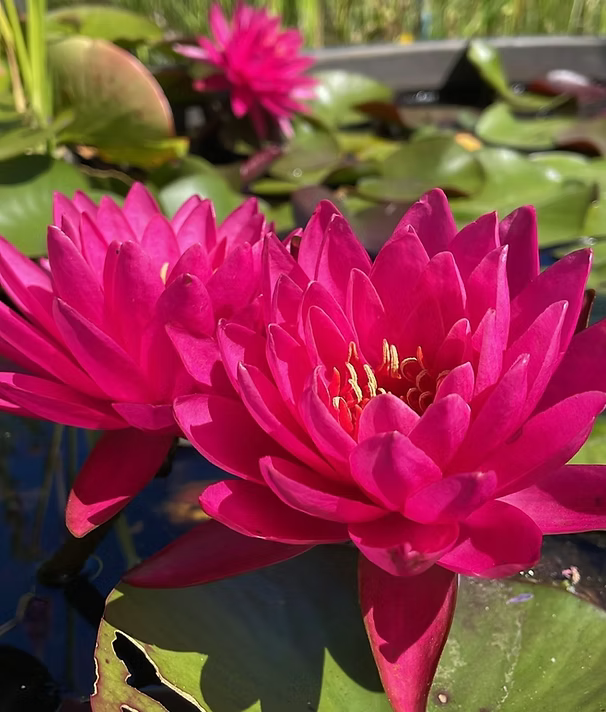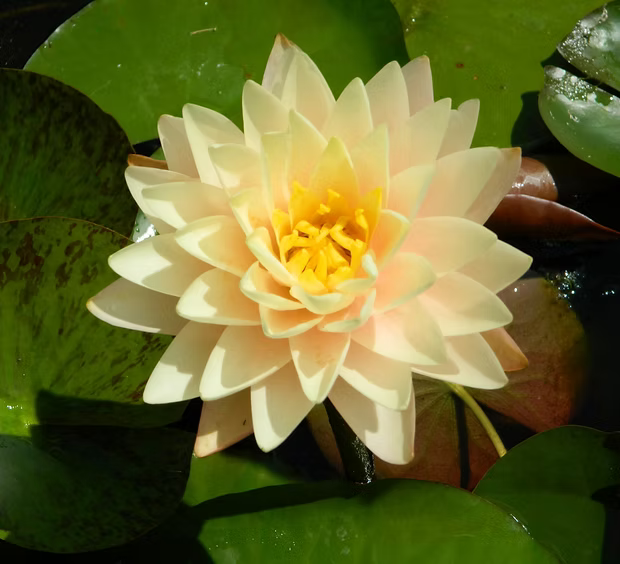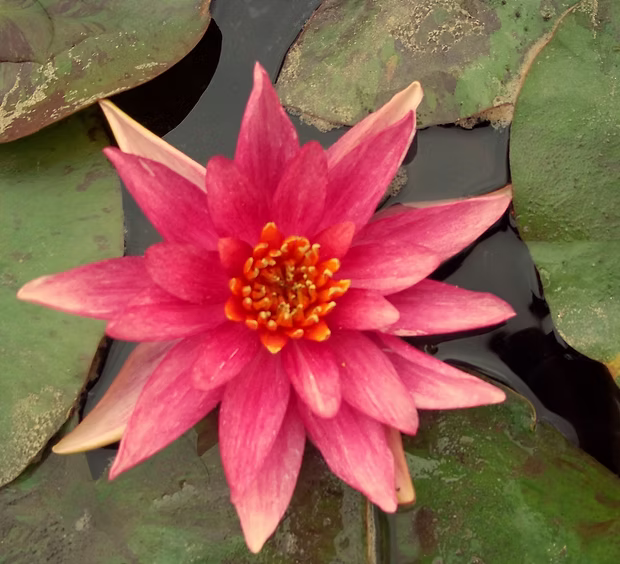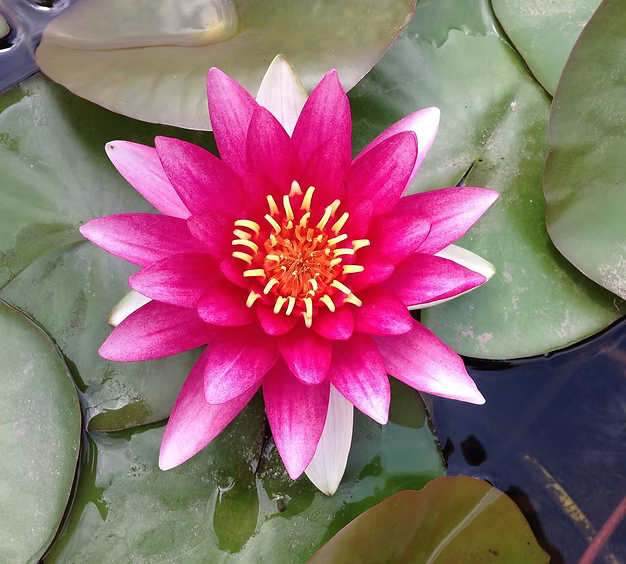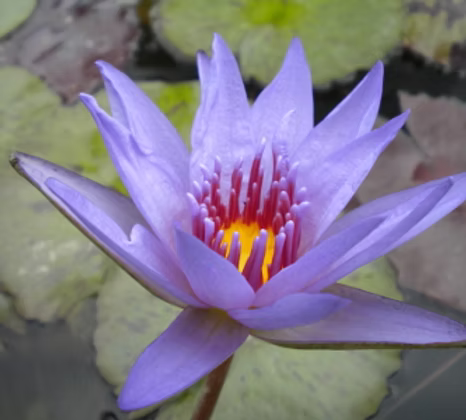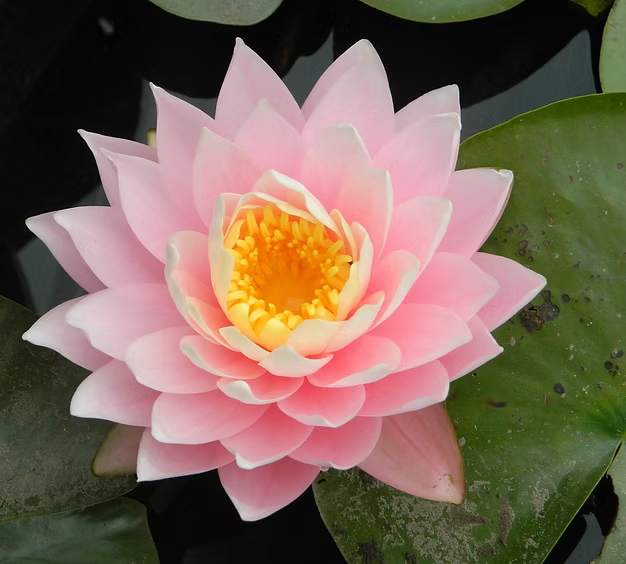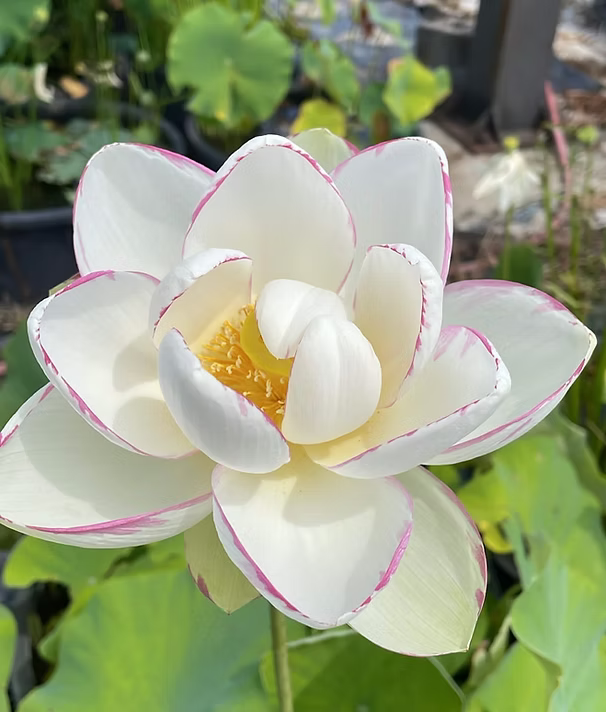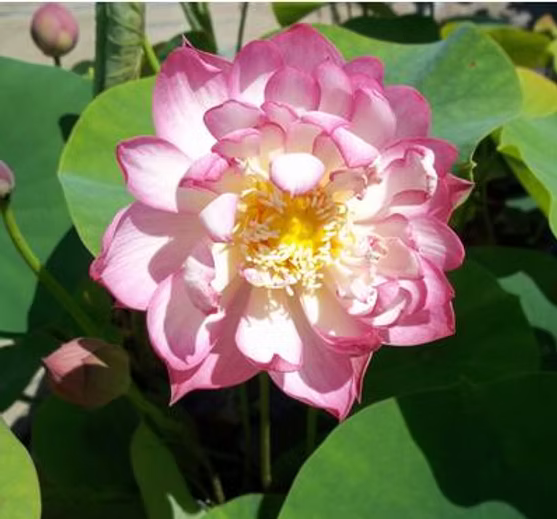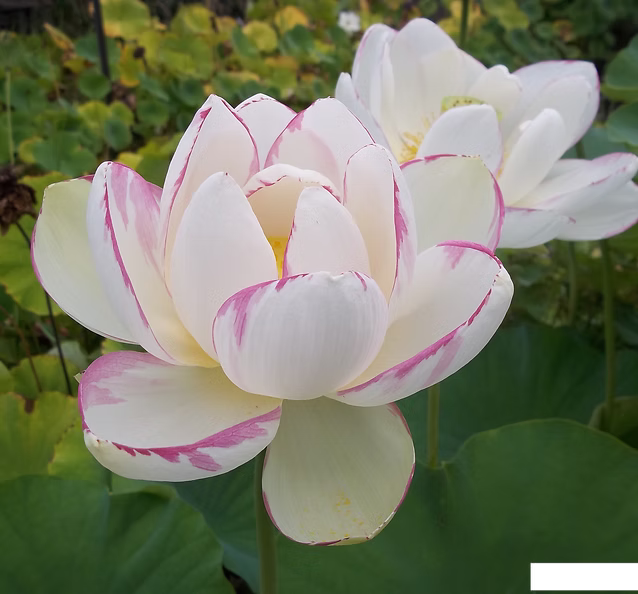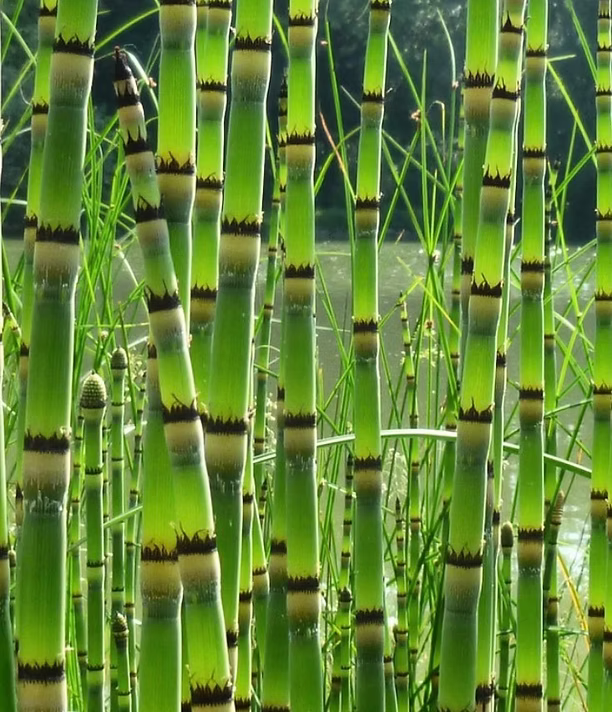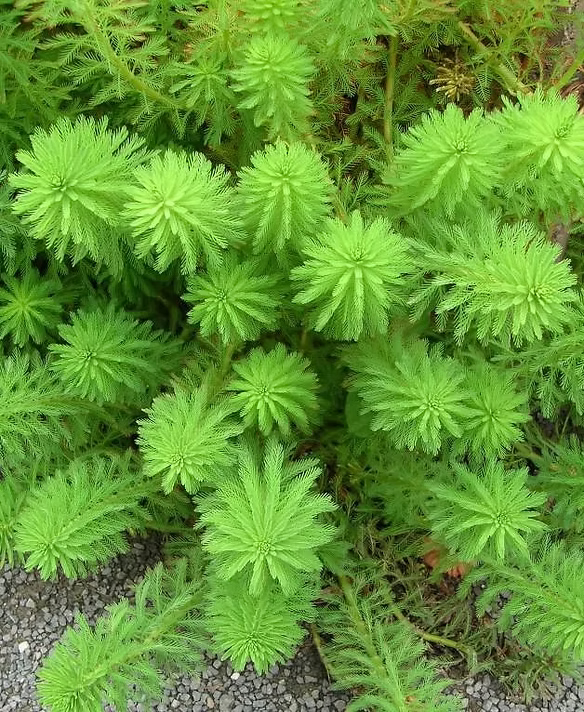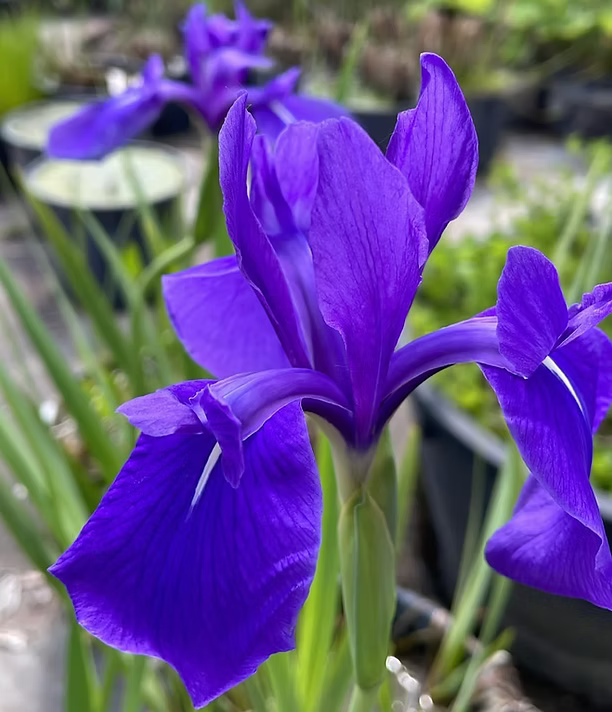Floating Plants for sale
Discover our floating plants, perfect for enriching your pond and maintaining the ecological balance.
Sort by:
7 products
7 products
Stratiotes aloides (Ditch Knifegrass)
Stratiotes aloides is a rare and highly sought-after aquatic plant. It has dark green, stiff, elongated and pointed leaves with serrated edges, arranged in submerged rosettes that resemble pineapple tufts.
In June, the plant emerges to the surface, displaying a small, three-petaled white flower that blooms alone in the axil of a leaf rosette. After the bloom and subsequent wilting of the flower, the plant begins to sink to the bottom of the pond, where it will spend the winter, only to re-emerge and bloom again with the arrival of the following spring.
Plant Information:
- Exposure: Full sun
- Flowering: June - August
Stratiotes aloides is ideal for sunny ponds and makes a fascinating and rare addition to aquatic environments.
Spirodela polyrhiza
S pirodela polyrhiza is an aquatic plant belonging to the Lemnaceae group, distinguishable by its fronds which are larger than those of Lemna minor. Its leaflets are entirely green and have evident veins on the upper surface. Numerous root systems develop under each leaflet, making the plant particularly efficient in absorbing nutrients.
Uses in Phytoremediation: Like other lemnaceae, Spirodela polyrhiza is widely used in the United States and other parts of the world for phytoremediation. Its ability to grow rapidly and absorb large amounts of nutrients makes it ideal for the treatment of municipal and agro-industrial wastewater, helping to remove pollutants and improve water quality in an environmentally friendly way.
Plant Information:
- Exposure: Full sun
- Flowering: June - August
Spirodela polyrhiza thrives in well-lit environments and, thanks to its adaptability and resistance, is an excellent choice for phytoremediation systems and for the decoration of ponds and aquariums.
Lemna minor (Duckweed)
Lemna minor is a small floating leaflet, known as duckweed. Each leaflet is about 2-3 mm in diameter, smooth and bright green on the upper side, while the lower side tends to be reddish-brown. These tiny plants live in dense colonies and form a thick carpet on the surface of the water.
Uses in Phytoremediation: Lemna minor is widely used in phytoremediation systems. Lemna-based systems are patented and represent one of the most effective solutions for:
- Remove heavy metals dissolved in water.
- Counteract excess phosphates.
- Reduce excess ammonium nitrogen.
Thanks to its rapid growth and ability to absorb nutrients and harmful substances, Lemna minor is an ecological and sustainable tool for water treatment and purification.
Plant Information:
- Exposure: Full sun
This plant thrives in full sun and contributes significantly to the cleanliness and maintenance of water quality in ponds, aquaponics systems or specially set up aquariums.
Lemna trisulca
Lemna trisulca is a small floating aquatic plant characterized by light green, slightly elongated fronds. These fronds appear in groups of three, arranged in a distinctive cross. The species lives mainly submerged, forming dense colonies on the surface of the water.
Uses and Adaptability:
- Lemna trisulca is also suitable for aquariums, where it can help create a natural habitat and improve water quality.
- The plant thrives in full sun, taking advantage of direct light for photosynthesis.
Plant Information:
- Exposure: Full sun
Lemna trisulca, with its delicate appearance and its ability to live in dense colonies, is ideal for embellishing ponds, aquariums and other situations where resistant and low-maintenance aquatic vegetation is required.
Trapa natans verbanensis (Water chestnut)
Trapa natans verbanensis, commonly known as water chestnut, is an aquatic plant characterized by diamond-shaped, serrated leaves that are arranged in a rosette. The leaves are olive green and tend to turn red in the fall, adding a seasonal touch to the aquatic landscape. The stems of the plant are reddish and support small white flowers.
Reproductive Cycle:
- The plant bears fruit in October. After pollination, the fruit undergoes a particular process: it folds under water, detaches from the plant and settles on the bottom of the body of water.
- There, the fruit will ripen and give rise to a new plant that will appear the following spring.
- Once the pulp is used up, the empty shell of the fruit rises to the surface again, completing the life cycle.
Plant Information:
- Exposure: Full sun
Trapa natans verbanensis is ideal for ponds and lakes exposed to the sun, where its singular reproductive cycle and the ornamental aspect of its color changes offer considerable botanical and aesthetic interest.
Azolla caroliniana
Azolla caroliniana, poetically called "fairy moss", is a floating mini-fern characterized by small, fleshy, bilobed pinnules, covered in fine hairs. These pinnules are arranged on both sides of the stem, in opposite pairs, and give the plant a delicate and almost ethereal appearance. In late summer, its leafy bodies tend to turn red, adding a touch of seasonal color to the aquatic environment.
This fern is particularly suitable for aquariums, where it can be placed in well-lit areas. Thanks to its floating nature, it helps improve the quality of the water by providing shade and protection from excessive sunlight.
Plant Information:
- Exposure: Full sun, partial shade
- Reproduction: Currently unavailable
Azolla caroliniana lends itself well to both natural ponds and aquariums, enriching the environment with its unique appearance and its ability to float on the surface.
Frequently Asked Questions About Floating Plants
Floating plants are plant species that live on the surface of the water, without rooting to the bottom. They absorb nutrients directly from the water and contribute to the balance of aquatic ecosystems.
They shade the water, reducing algae growth.
They absorb excess nutrients, improving water quality.
They provide shelter for small fish and aquatic insects.
They contribute to the reduction of CO₂ emissions through photosynthesis.
Yes, they are suitable for natural ponds, ornamental ponds, and even small aquariums, as long as their light and temperature requirements are met.
Maintenance is minimal. However, it is important to control their growth to prevent them from completely covering the surface of the water, limiting light and oxygenation for other species.
They simply rest on the water. If you grow them alone, put a layer of fertile soil on the bottom. Floating plants also have, although to a lesser extent than oxygenating plants, the ability to make the pond water clear through two mechanisms: in fact, by spreading out like a carpet on the surface of the water, they deprive the algae of the sunlight they absolutely need to grow and reproduce; furthermore, their roots floating in the water deprive it of the nutrients that cloud it.

